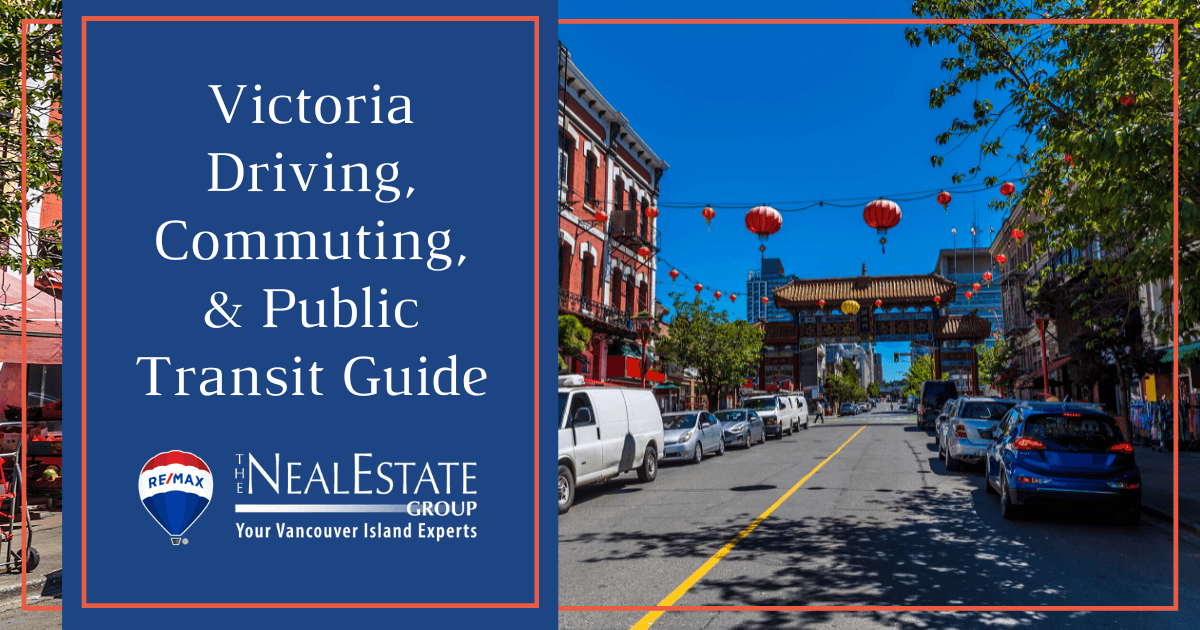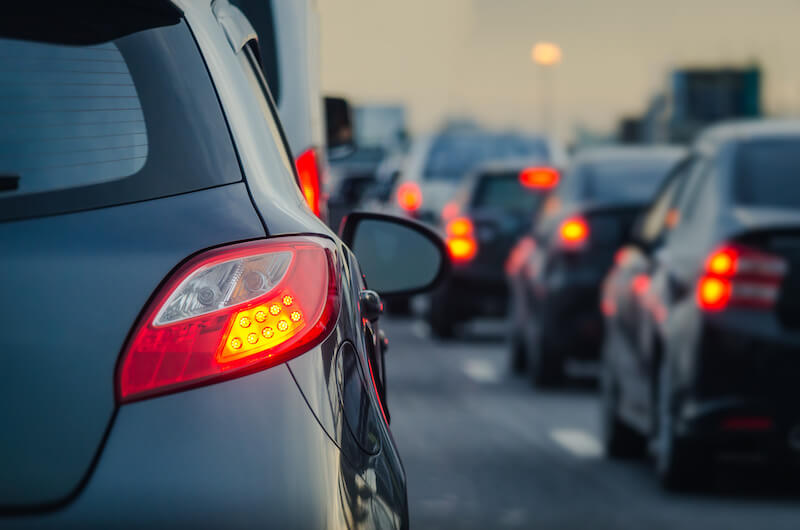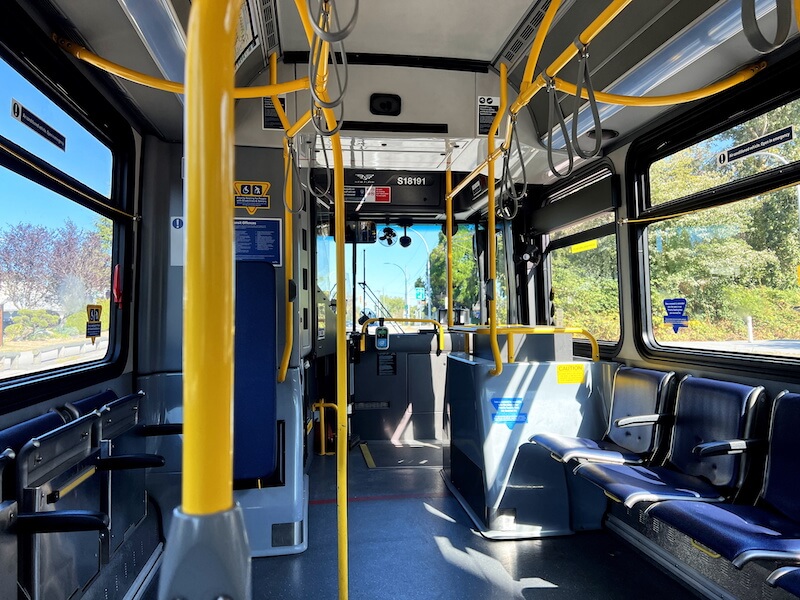Driving in Victoria & Public Transit: Victoria Commuting Tips
Posted by Ron Neal on Wednesday, February 15th, 2023 at 11:54am.

The city of Victoria, BC, is a beautiful, water-privileged community and the largest city on Vancouver Island. Newcomers frequently want to know about traffic in Victoria since so many workers are employed in the downtown and surrounding areas. The good news is that Victoria is relatively easy to get around in once a person figures out the major roads to use or avoid at certain times, and there's an excellent public transportation system. For anyone considering moving to Victoria, this short guide will tell them everything they need to know about driving in the area.
Get to Know Your Major Roads
Highway 1, known as the Trans-Canada Highway, famously begins in Victoria. There's a Mile Zero Monument at Beacon Hill Park in South Victoria to mark the beginning of the road. Most of the condos in Victoria are located close to this major road. The highway continues north through Downtown Victoria and then turns northwest in the Saanich community. The route then continues to the ferry terminal at Departure Bay—the ferry crossing is considered part of the Trans-Canada Highway. Once the ferry docks at Horseshoe Bay, to the northwest of Vancouver, the highway continues across Canada to the Atlantic Ocean.
The Patricia Bay Highway (Highway 17) is another north-south route within the Victoria city limits. It continues north to the Victoria International Airport at the Sidney neighbourhood. The road then terminates at the Swartz Bay Ferry Terminal, which provides passage to several other places in the islands and the Tsawwassen Ferry Terminal south of Vancouver.
Pandora Avenue is an important east-west street in Victoria that crosses the Johnson Street Bridge into West Victoria. Another east-west route is Bay Street, which crosses the Point Ellice Bridge into West Vancouver. Foul Bay Road is a north-south street that marks the eastern boundary of the Victoria city limits and continues north to the University of Victoria.
What to Expect Driving at Different Times of Day

Victoria has morning and afternoon rush hour periods like any other major city. Most of Victoria's north-south routes experience a heavier traffic volume during the rush hour because so many workers are concentrated in the downtown area. The morning rush hour lasts from about 6:00–9:00 a.m. as everyone is heading to work in the city. The congestion eases for a few hours until the afternoon rush, which happens from 3:00–6:00 p.m. on weekdays.
The roads can become congested on routes heading into Victoria or the streets leading to the bridges into West Victoria. The city has been working for several years to adjust traffic patterns, undertaking new construction projects to help ease congestion. Adding more bus lanes is one option that has been in the works.
Parking
The City of Victoria requires anyone who parks in a residential area to register their vehicle with the city. They cannot park in that residential zone unless their car is registered. These zones around the city are marked with signs stating "Residential Parking Only," and they are strictly enforced.
The city operates five parking garages, three street parking lots, and around 2,000 metered parking spaces in the downtown area. Parking generally costs about $2 per hour, regardless of the resident's choice. The ParkVictoria App is the easiest way to pay for parking.
Drivers should also know that painted curbs usually indicate that an area is a "No Parking" zone. Parking is never allowed by yellow curbs, and red curbs are reserved for buses only. White curbs are loading docks, but people can park there depending on the dock's hours. Signs will indicate the hours when white curbs cannot be used for parking.
Public Transportation

Amtrak operates the only train that travels into Victoria, and it arrives once per day. The rest of the public transportation system consists of a regional bus service called BC Transit.
BC Transit operates around 350 buses in the Greater Victoria area. The main bus route destinations include Downtown Victoria, the Royal Oak Exchange (Saanich), the Langford Exchange, the Colwood Exchange, and the University of Victoria. The NextRide Victoria app is one of the easiest ways to plan a route with BC Transit.
Secondary students between 13 and 18 can get discounted fares through the U-PASS program. ProPASS is another option employers in some local communities use to offer their workers reduced bus rates.
BC Transit Fares
- Cash Fare: $2.50
- 10 Tickets: $22.50
- DAYPASS: $5.00
- Adult Monthly Pass: $85.00
- Senior (65+) Monthly Pass: $45.00
- Youth (18 or Under) Monthly Pass: $45.00
- Children 6 to 12: Free
- Children 5 and Under: Free with an attendant aged 12 or older
Commute Times from Suburbs to Downtown
Residents in the Victoria area spend an average of about 22 minutes commuting to work in the morning, seven minutes less than Vancouverites. The Greater Victoria region has one of the lowest shares of long commutes in British Columbia. Here's a look at travel times from several local suburbs to Downtown Victoria.
Langford
Langford is a suburb located about 14 kilometres directly west of Downtown Victoria. Despite the short distance, a rush hour commute from Langford can take up to 45 minutes. The drive can take as little as 15 to 20 minutes during less congested traffic. On average, the Line 50 bus takes about 31 minutes. The best route is to take the Trans-Canada Highway (Highway 1) directly from the city of Langford to Downtown Victoria. Getting off the highway at the McKenzie Interchange and then taking Burnside Road is an alternate route, but it usually won't shorten the morning drive.
Saanich
Saanich is one of the closest neighbouring suburbs to Victoria. It's just three kilometres north of the downtown area. Driving down Highway 1 is the fastest route to get there. The commute can take anywhere from 6–16 minutes during rush hour traffic. Highway 1 in Victoria is part of BC Transit's "rapid transit corridor," so bus service will also take commuters from the Saanich Peninsula to Downtown. However, the trip will take a few minutes longer due to stops.
Duncan
The city of Duncan is about 60 kilometres to the northwest of Victoria, so this commute takes longer than some of the closer suburbs. The only real option for commuting from Duncan is to take Highway 1 to the downtown area in Victoria. The drive takes around 55 minutes or 1 hour via car or bus, respectively, during low-traffic times. During rush hour, the drive can take up to 1 hour and 40 minutes. The main congestion happens on Highway 1 between Langford and the McKenzie Interchange every morning during the rush hour (6–9 a.m.).
Nanaimo
The city of Nanaimo is 111 kilometres northwest of Victoria, near the Meakin Channel in the Strait of Georgia, so this commute takes longer. This is another Highway 1 commute the whole way. By car, the drive takes about 1 hour and 35 minutes during non-rush hour traffic. Taking the bus extends the trip to about 1 hour and 50 minutes. During rush hour, the drive is extended to about 2 hours and 20 minutes. The most congestion happens between Langford and the McKenzie Interchange on this route.
Swartz Bay
The community of Swartz Bay is about 31 kilometres directly north of Downtown Victoria. The city has one of the essential ferry terminals on Victoria Island, offering transit to mainland British Columbia, other communities in the nearby islands, and northwest Washington State at Anacortes. The commute from Swartz Bay to Downtown Victoria involves taking Highway 17 south to the downtown area.
During non-rush hour traffic, the drive takes about 30 minutes, while the bus takes just under an hour. During the morning rush, the Swartz Bay drive can take between 30 and 55 minutes. The main congestion on this route is a short stretch of highway running through the village of Saanichton.
Port Alberni
Port Alberni is a lovely little community about 195 kilometres northwest of Downtown Victoria. Because of the distance, this is unlikely to be a "work commute" for anyone, but many people travel from the city of Port Alberni for festivals and special events in Victoria. Port Alberni is connected to Victoria by a bus route that takes approximately 4 hours. Driving can usually cut the trip in half.
The easiest route from Port Alberni involves taking Highway 4 east from the city. Motorists should then get on Highway 19 just south of the town of Qualicum Beach. Highway 19 connects to Highway 1 in Nanaimo, and motorists can continue on that road the rest of the way. The commute can be completed in 2 hours and 20 minutes if rush hour traffic is avoided. During rush hour, the drive can take 3 hours and 20 minutes.
Colwood
Colwood is a lovely suburb west of Downtown Victoria and directly south of Langford. It's about a 14-kilometre drive, which can be completed in as little as 20 minutes during non-congested times. During rush hour, the trip can take between 20 and 45 minutes. The best route is to take the Island Highway from Colwood northeast to Highway 1 and then follow Highway 1 the rest of the way. This does involve driving through that stretch of congestion between Langford and the McKenzie Interchange. Riding the bus from Colwood to Downtown Victoria can take up to an hour.
Other Helpful Things to Know
Victoria is built around the shoreline of Victoria Island, so the city doesn't follow a normal north-south, east-west grid system like other places do. Many of Victoria's roads and streets will change names after going around a mild curve. This can be confusing, and getting used to it can take time. Using a smartphone GPS map is one of the easiest ways to navigate the city. The key is trusting the GPS and understanding that a street will change to a different name multiple times!
Getting Around Victoria, BC, in Style
From Victoria's luxury homes to its beaches and spectacular views, this colourful city is a pleasure to visit or live in. Moving to any new community has an adjustment period for commuters. However, because of frequent street name changes, Victoria takes a little longer to get accustomed to. The good news: no matter how long your daily commute is, the view is always amazing along the way!
If you're dreaming about living in Victoria, contact The Neal Estate Team at (250) 386-8181 to get in touch with a local Victoria real estate agent who can help you find your perfect home.
Leave a Comment
 - Copy.png)
The Neal Estate Group is your #1 source for all of your Victoria BC real estate needs. Get in touch with us online or by phone at (250) 386-8181 to speak with a Victoria real estate buying or selling expert today. With decades of experience as a top selling Victoria REALTOR® and ranked in top 1% globally with over 5,000 transactions and $1 Billion SOLD, Ron Neal & The Neal Estate Group have the industry experience and market knowledge to help you make smart and informed buying or selling decisions.
